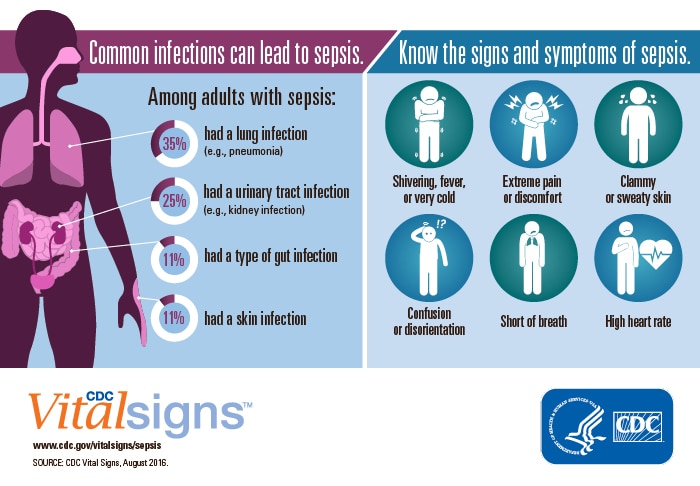by Find-A-Code™
Aug 30th, 2016
According to a new Vital Signs report released by CDC, 80 percent of people who get sepsis develop this often deadly complication outside of a hospital. Sepsis is a complication caused by the body’s overwhelming and life-threatening response to infection.
Sepsis can lead to tissue damage, organ failure, and death. The signs and symptoms of sepsis include:
- Shivering, fever, or feeling very cold.
- Extreme pain or discomfort.
- Clammy or sweaty skin.
- Confusion or disorientation.
- Shortness of breath and high heart rate.
About 7 in 10 patients with sepsis had chronic diseases that required medical care or they had recently obtained health care services. These are opportunities for health care providers to prevent, recognize and treat sepsis long before it can cause life-threatening illness or death.

“When sepsis occurs, it should be treated as a medical emergency,” said CDC Director Tom Frieden, M.D., M.P.H. “Doctors and nurses can prevent sepsis and also the devastating effects of sepsis, and patients and families can watch for sepsis and ask, ‘could this be sepsis?’”
When sepsis is quickly recognized and treated, lives can be saved. CDC advises health care providers to take these steps to protect patients from infections that can lead to sepsis and to help prevent infections from occurring:
- Prevent infections. Follow infection control requirements, such as hand washing, and ensure patients get recommended vaccines, such as flu and pneumococcal.
- Educate patients and their families. Stress the need to prevent infections, manage chronic conditions, and, if an infection is not improving, promptly seek care. Don't delay.
- Think sepsis. Know the signs and symptoms to identify and treat patients early.
- Act fast. If sepsis is suspected, order tests to help determine whether an infection is present and identify its location and source. Start antibiotics and other recommended medical care immediately.
- Reassess patient management. Check patient progress frequently. Reassess antibiotic therapy in 24-48 hours or sooner and change therapy as needed. Determine whether the type of antibiotics, dose and duration are correct.
For more information about sepsis, see the Vital Signs report.


 Quick, Current, Complete - www.findacode.com
Quick, Current, Complete - www.findacode.com